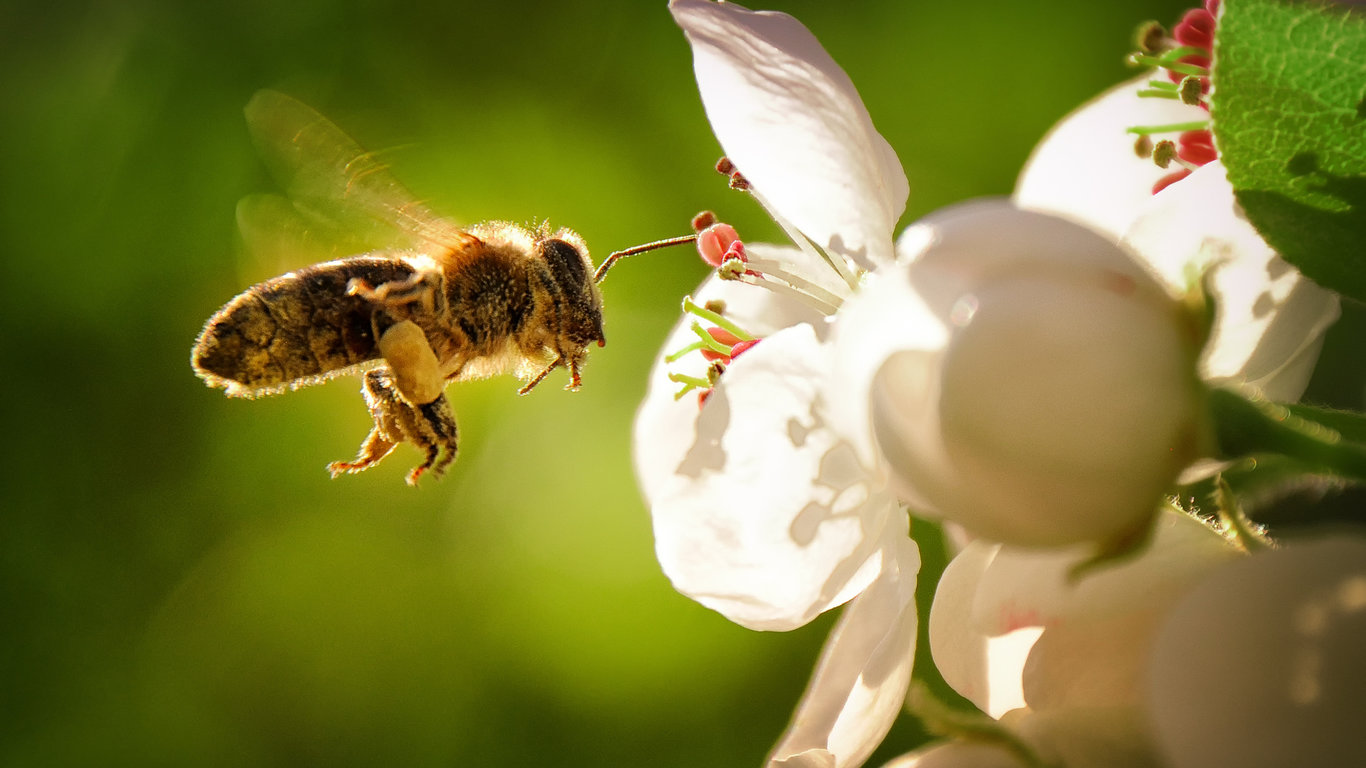
The buzz of bees is the soundtrack of summer and spring, like the hum of a lawnmower or the soothing cadence of a sprinkler. Bees zip by your ear, hover over food at picnics, and they can sting, sometimes with lethal results.
Bees can be annoying, like a neighbor who plays music at high volume. But these insects are also something else — vital to our survival. Bees are what is called a keystone species, meaning the existence of other species depends on them.
Many animal species rely on bees to survive because their food sources — nuts, berries, seeds, and fruits — depend on pollination. Bees pollinate many crops such as apples, avocados, blueberries, cantaloupes, cashews, coffee, eggplants, grapes, okra, peaches, and watermelons. According to some estimates, one-third of our food depends on bees for pollination.
Besides supplying food for other organisms, pollination creates the conditions for floral growth, providing environments for animals. The role bees play in pollination can’t be underestimated. About 90% of flowering species depend on insect pollination. A honeybee, one of 25,000 species of bees, can usually visit 50 to 1,000 flowers in one trip. If that industrious insect makes 10 trips a day, a colony of, say, 25,000 bees doing the same thing can pollinate 250 million flowers in a day.
Here is what else is at stake. The value of the global crop production pollinated by bees is $577 billion, and some estimates claim the effect of bee pollination is responsible for $24 billion of the U.S. agriculture industry. These are the crops that would be most affected if honey bees disappeared.
The world bee population is in decline, and human activity is largely to blame because of pesticide use, pollution, overbuilding, and our role in climate change.
The main culprit is a pesticide called neonicotinoid, a chemical similar to nicotine, which is poisoning the bees. A Harvard School of Public Health study found a link between the use of two neonicotinoids and the collapse of honey bee colonies.
Climate change has possibly disrupted the coordination of flower opening and bee hibernation, according to an analysis of one plant species by the University of Toronto. This disruption also causes bees to die.
In recent years, beekeepers have reported annual hive losses of 30% or higher, well above what is considered sustainable.
The U.S. Fish and Wildlife Service listed the bumble bee as endangered in 2017, becoming the first wild bee in the continental United States accorded federal protection. The bumble bee is one of 47 species native to the United States and Canada, according to the International Union for the Conservation of Nature, and more than one-fourth of them are at risk of extinction. The plight of bees reflects the current ongoing wave of animal and plant extinction, the worst since the dinosaur era. Here are species that may have recently gone extinct.
The decline of the bee population has ramifications for the ecosystem. Besides providing food for other organisms, pollination allows for the conditions for floral growth, creating environments for animals. If bees die, birds lose a food source, wreaking havoc up and down the food chain.
What are people doing? Five years ago, President Barack Obama created a Pollinator Health Task Force to marshal resources to stem the loss of bees. The United States Department of Agriculture also announced incentives for farmers to build new habitats for honeybee populations. On local levels, people are being encouraged to plant more and diverse flowers to assist in the growth of bee populations.
Bees have busied themselves for 20,000 years. They’ve survived in all kinds of climates, from the Arctic Circle to deserts in Africa. A world without bees may eventually be a world without us. And we would only have ourselves to blame.
100 Million Americans Are Missing This Crucial Retirement Tool
The thought of burdening your family with a financial disaster is most Americans’ nightmare. However, recent studies show that over 100 million Americans still don’t have proper life insurance in the event they pass away.
Life insurance can bring peace of mind – ensuring your loved ones are safeguarded against unforeseen expenses and debts. With premiums often lower than expected and a variety of plans tailored to different life stages and health conditions, securing a policy is more accessible than ever.
A quick, no-obligation quote can provide valuable insight into what’s available and what might best suit your family’s needs. Life insurance is a simple step you can take today to help secure peace of mind for your loved ones tomorrow.
Click here to learn how to get a quote in just a few minutes.
Thank you for reading! Have some feedback for us?
Contact the 24/7 Wall St. editorial team.


